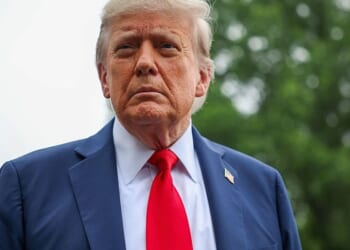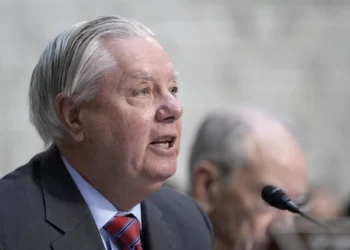Executive Order 14321, “Ending Crime and Disorder on America’s Streets,” recently signed by President Donald Trump, represents a long-overdue pivot from failed left-wing policies. Instead, the executive order offers comprehensive solutions that address the root causes of urban decay and homelessness.
During my time at the Department of Housing and Urban Development, I saw how equity policies have failed our homeless populations. Unless we stop allowing individuals to subvert the law and unless we stop permitting the illicit use of drugs among homeless communities, we will never address the fundamental problems that plague them. The current approach of enabling destructive behavior through misguided compassion has created a vicious cycle. It traps people in homelessness rather than providing them with pathways to recovery.
The stark failure of prior policies is undeniable. The Biden administration oversaw a massive growth in homeless populations. From San Francisco to Seattle, from Los Angeles to Portland, we have witnessed the human cost of policies prioritizing ideology over effective intervention.
The Housing First model, championed by the welfare establishment for decades, exemplifies this misguided approach. By providing housing without addressing underlying problems such as substance abuse, mental health problems, and behavioral disorders, Housing First has created expensive band-aids rather than meaningful solutions. This approach ignores the complex web of factors that lead to homelessness and treats symptoms while allowing root causes to fester. The result has been billions of taxpayer dollars spent with little to show, except for growing encampments and deteriorating public safety.
Trump’s executive order recognizes what common sense has long dictated: that effective intervention requires addressing the full spectrum of problems facing homeless individuals. This includes holding people accountable for criminal behavior, providing treatment for substance abuse, and creating structured pathways to self-sufficiency. Rather than enabling destructive choices, the order emphasizes rehabilitation and recovery as essential components of any successful anti-homelessness strategy.
Critics will inevitably characterize this approach as lacking compassion, but the opposite is true. Allowing people to deteriorate in public spaces while society looks the other way is not compassionate; it is cruel abandonment disguised as democratic virtue. The executive order also recognizes the interconnected nature of crime and disorder. When cities tolerate open drug use, theft, and disregard for public safety, they create environments where more serious crimes flourish. By addressing quality-of-life problems and maintaining public order, communities can break the cycle of deterioration that makes neighborhoods unsafe for law-abiding citizens while trapping vulnerable individuals in destructive patterns.
Effective policy requires acknowledging uncomfortable truths about human behavior and social dynamics. People respond to incentives, and when society signals that destructive behavior will be tolerated or enabled, more people will engage in such behavior. Conversely, when clear boundaries are established and enforced, combined with genuine opportunities for rehabilitation and improvement, individuals are more likely to make positive choices.
ESCALATING CHINA-PHILIPPINES TENSIONS CRYSTALIZED BY CHINA WARSHIP COLLISION
The time has come to abandon failed liberal experiments and embrace policies that actually work. Trump’s Executive Order provides the framework for restoring the supremacy of law and dignity to America’s streets, while offering genuine hope for recovery to those who need it most.
Our new policy outlook represents a return to evidence-based solutions that prioritize results over ideology. By combining accountability with genuine assistance, enforcement with opportunity, and structure with compassion, this approach offers hope for breaking the cycle of homelessness that has plagued American cities for too long.
Dr. Ben Carson is the founder and chairman of the American Cornerstone Institute.















